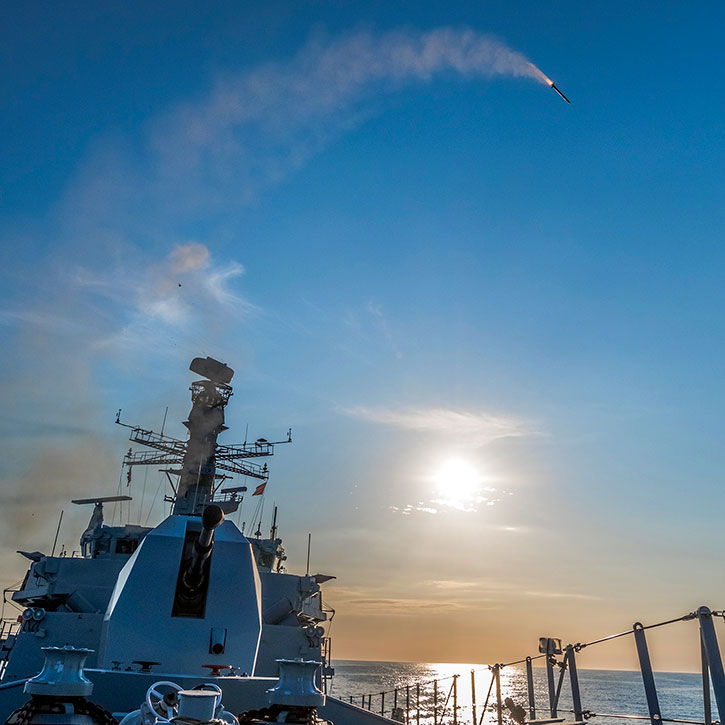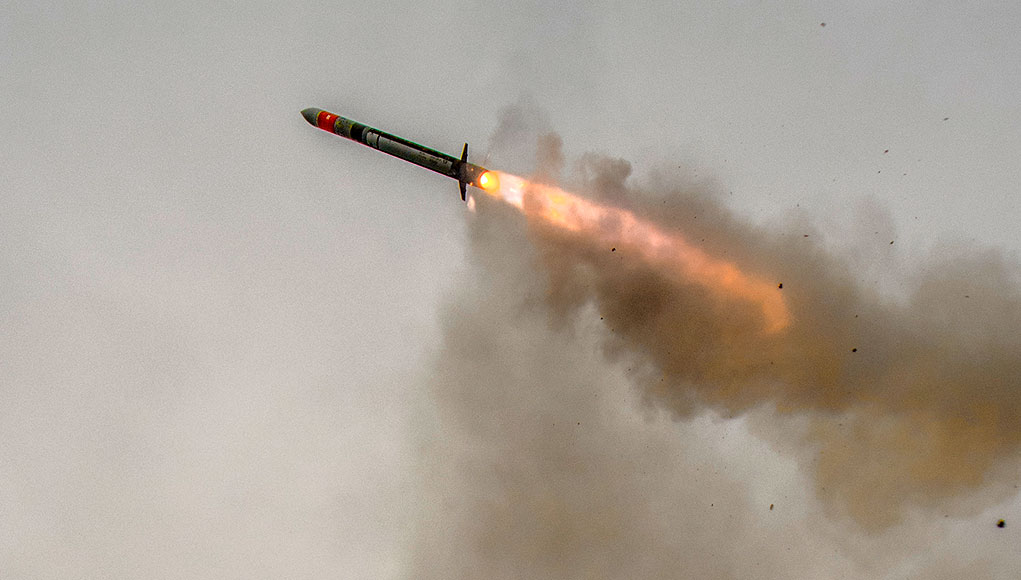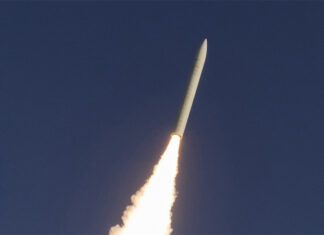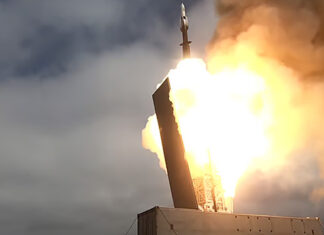
The Sea Ceptor weapon system recently completed its first successfully firings from HMS Argyll. The frigate is one of three Royal Navy Type 23 frigates being modified with the Sea Ceptor system, replacing the older Sea Wolf. The test is a major milestone for the life-extension program of Type 23 frigates.
HMS Argyll is the first Type 23 to undergo the life-extension program. She will conduct further firing trials of the Sea Ceptor system before deploying to Japan next year. Sea Ceptor will provide the Royal Navy with an improved shield against airborne threats such as the new generation of supersonic anti-ship missiles, fast jets, helicopters and unmanned aerial vehicles. Alongside providing robust self-defense, importantly Sea Ceptor defends escort vessels within a maritime task group, such as for the new Queen Elizabeth Class aircraft carriers.
Sea Ceptor uses MBDA’s next-generation Common Anti-air Modular Missile (CAMM), is being fitted to replace the Sea Wolf weapon system on these frigates, as well as the new Type 26 and, it may also be selected for the future Type 31 about to replace them in the Type 23s next decade. The Sea Ceptor development and integration was funded under contracts worth £639m contract and fit them to the Type 23 and Type 26 frigates.
Compared to Sea Wolf, CAMM is faster, has longer range, has a two-way data link, and has a much more advanced seeker, all of which enable the missile to intercept more challenging targets. The missile capable of reaching speeds of up to Mach 3 and will have the ability to deal with multiple targets simultaneously, protecting an area of around 500 square miles (1,300 square Km) over land or sea.
Traditional air defense systems utilize semi-active radar guidance, meaning they rely on a surface-based fire control radar to illuminate the missile’s target. The missile uses an active radar seeker and data link on the missile thus avoiding reliance on the ship’s radar for guidance. This technology enables the ship to employ multi-mission radars and intercept more targets simultaneously, across 360 degrees – something a semi-active system could not do. Its clean aerodynamic design yields improved performance and easier, more compact installation on board. The use of an innovative soft vertical launch system significantly reduces the impact of a traditional “hot launch” missile on both the ship and the crew.
Land Ceptor – the land-based derivative of Sea Ceptor – will replace Rapier in British Army service as the future generation Ground Based Air Defense (GBAD).




















